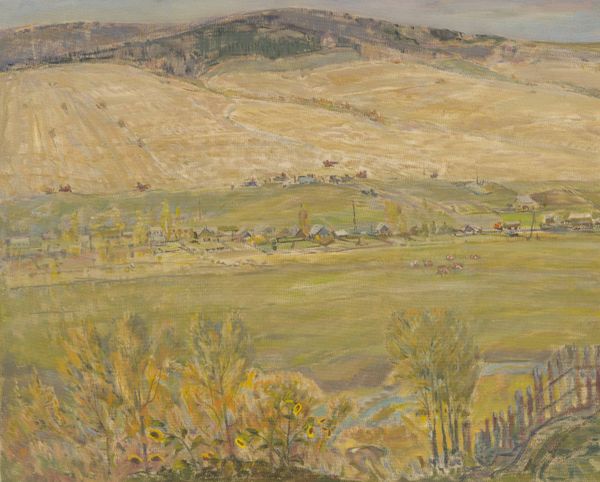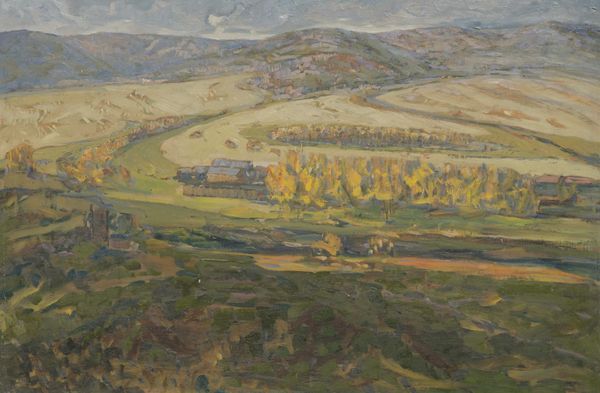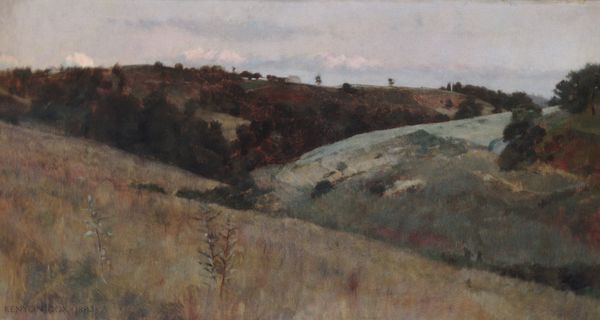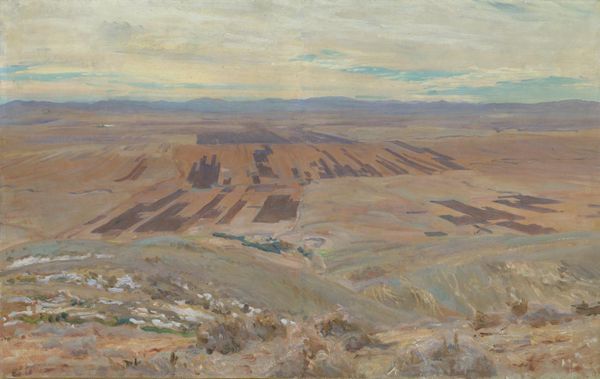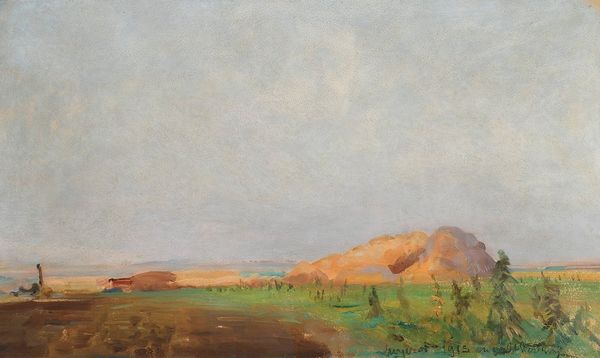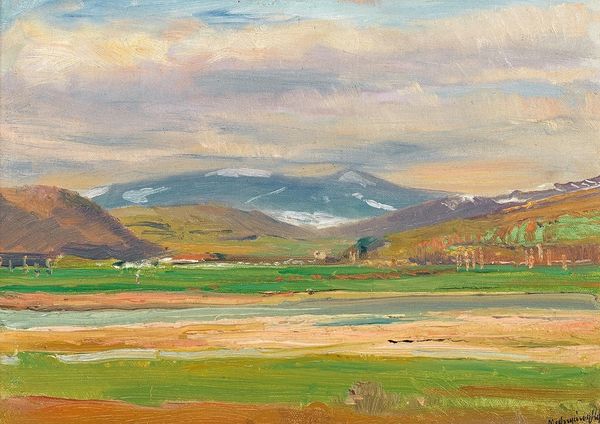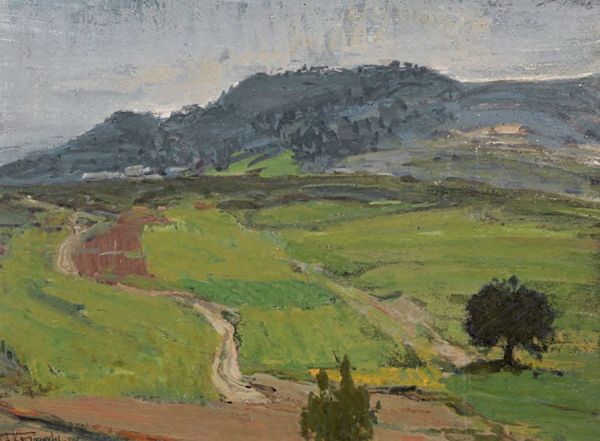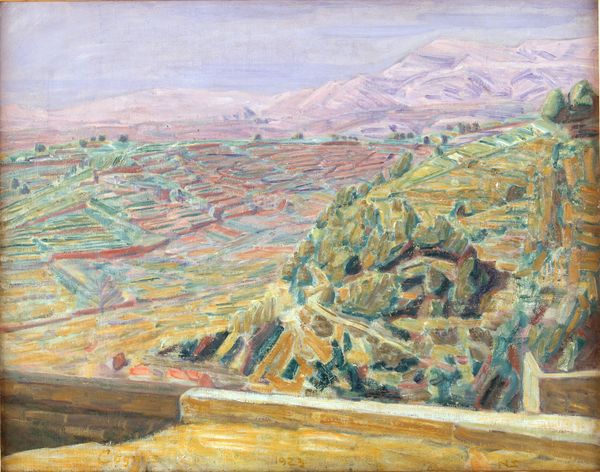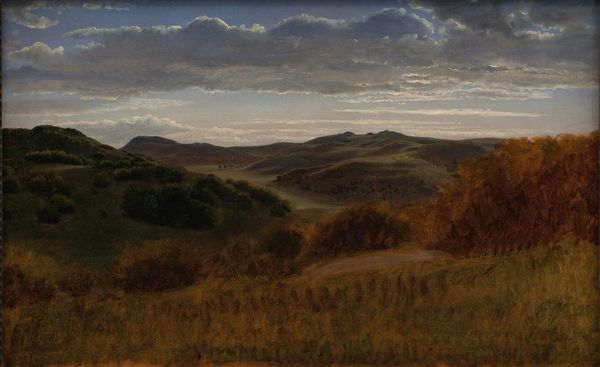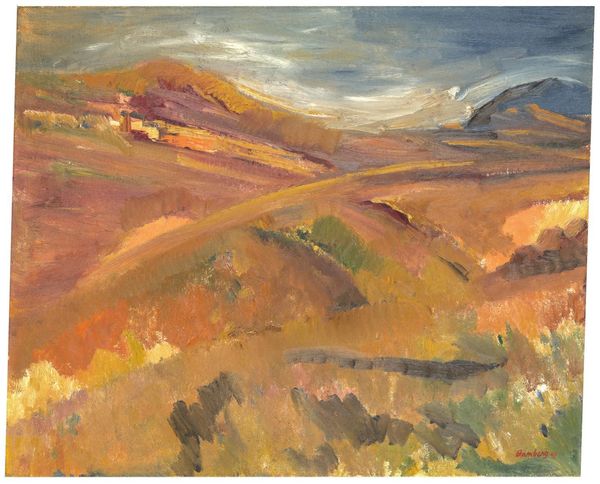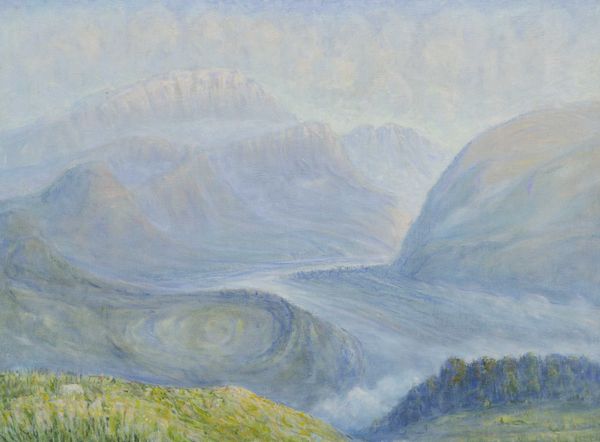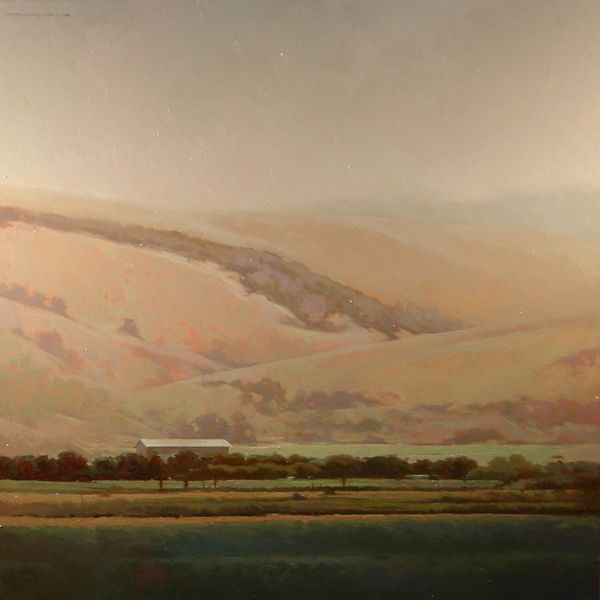
Dimensions: 91 x 200 cm
Copyright: Mikhail Olennikov,Fair Use
Curator: Mikhail Olennikov's 1984 painting, "Mukhorshibir, Tynui Open Spaces," utilizes oil paint to capture a sweeping landscape. Editor: Immediately, I'm struck by the hazy light, almost monochromatic; the scene feels vast and somehow lonely. The hills roll into the distance, their forms softened. Curator: Olennikov’s brushwork certainly contributes to that diffused effect. Note how he blends colors to create a sense of atmosphere; the lines are blurred, almost dissolving into the light itself. One might describe this haziness using a structuralist framework that examines how color and tone can produce a depth of field through subtle manipulation. Editor: Beyond its technical achievement, there's something very poignant about this particular depiction of the Russian landscape. In 1984, during a period of late Soviet stagnation, I wonder how the viewers saw an open and perhaps free depiction of the landscape. Did the absence of socialist figures reflect subtle resistance or merely a yearning for something more agrarian and removed? Curator: Interesting point! Focusing just on the painted surface, you can see the rhythmic arrangements of textures, from the foreground's fields, stacked and horizontal, to the background’s fluid hillside where the painter seems unburdened. This textural juxtaposition creates dynamism, a vital interplay, and thus, the very structure sings. Editor: I am particularly drawn to the little structures nestled at the base of the slope— they are so subtly rendered. These structures invite speculation. Were these collective farms? Private dwellings on display as socialist progress in the vast agricultural spaces? Their placement says something about society's imprint on even these seemingly untouched spaces. Curator: Undoubtedly, this landscape has become charged. When looking at its material elements such as form and color, it offers not just what it represents but *how* meaning arises. It makes me wonder what other insights close examination will give future viewers. Editor: And I am left contemplating the way historical context imbues landscape art with so much meaning; its continued power to be read as resistance or simply to promote the inherent connection with land and place.
Comments
No comments
Be the first to comment and join the conversation on the ultimate creative platform.
